Abstract
Fecal samples from calves on 78 randomly selected Holstein dairy farms in southwestern Ontario were screened for Salmonella, Campylobacter jejuni/coli, enteropathogenic Escherichia coli, rotavirus and coronavirus. Based on the observed prevalence, 22% of farms had calves infected with Salmonella, 13% with Campylobacter jejuni/coli, 41% with enteropathogenic E. coli, 19% with rotavirus and 5% with coronavirus. These estimates can be modified, using a method developed by Mullen and Prost (1983) for the World Health Organization, to account for the nature of the laboratory test used. If the test is assumed to have no false positives (that is, if an organism is detected it must be there), then the observed prevalence estimates seen on this study may greatly underestimate the true prevalence of infected premises. The use of nipple feeders for calves was associated with an increased probability of farms having calves shedding detectable fecal levels of Salmonella, E. coli, or one of the two viruses. The use of group pens was associated with an increased odds of finding C. jejuni. Calves with diarrhea on these farms tended to have increased odds of shedding rotavirus, and E. coli with the K99 antigen. However, at the farm level, none of the organisms was associated with above median levels of morbidity. Farms positive for one or other of the viruses had increased odds of experiencing calf mortality relative to virus-negative farms, and farms positive for C. jejuni/coli had decreased odds of mortality.(ABSTRACT TRUNCATED AT 250 WORDS)
Full text
PDF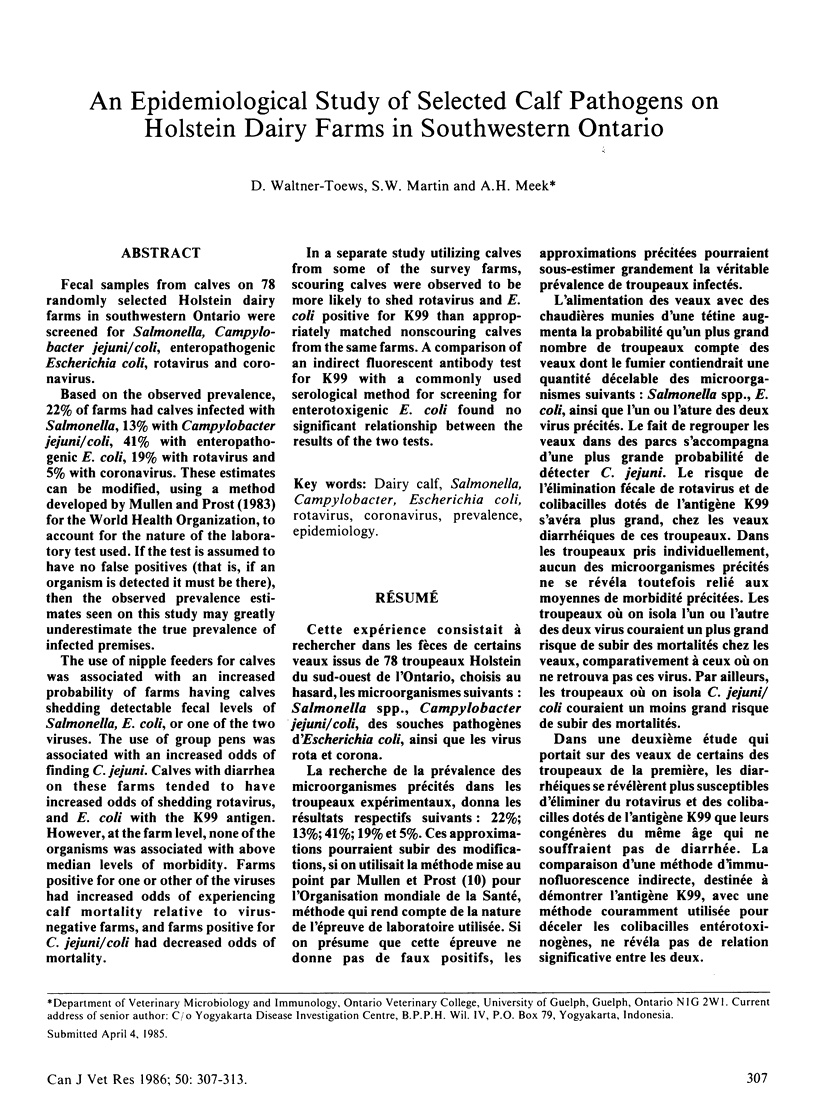
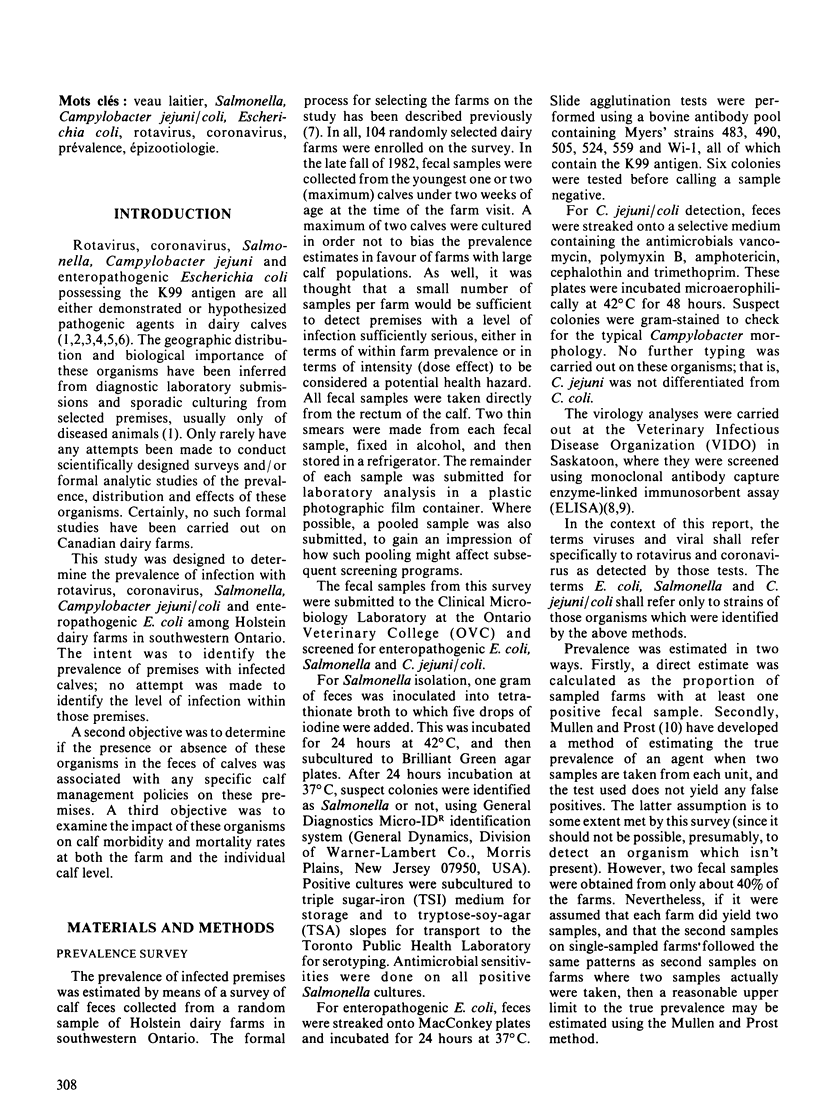
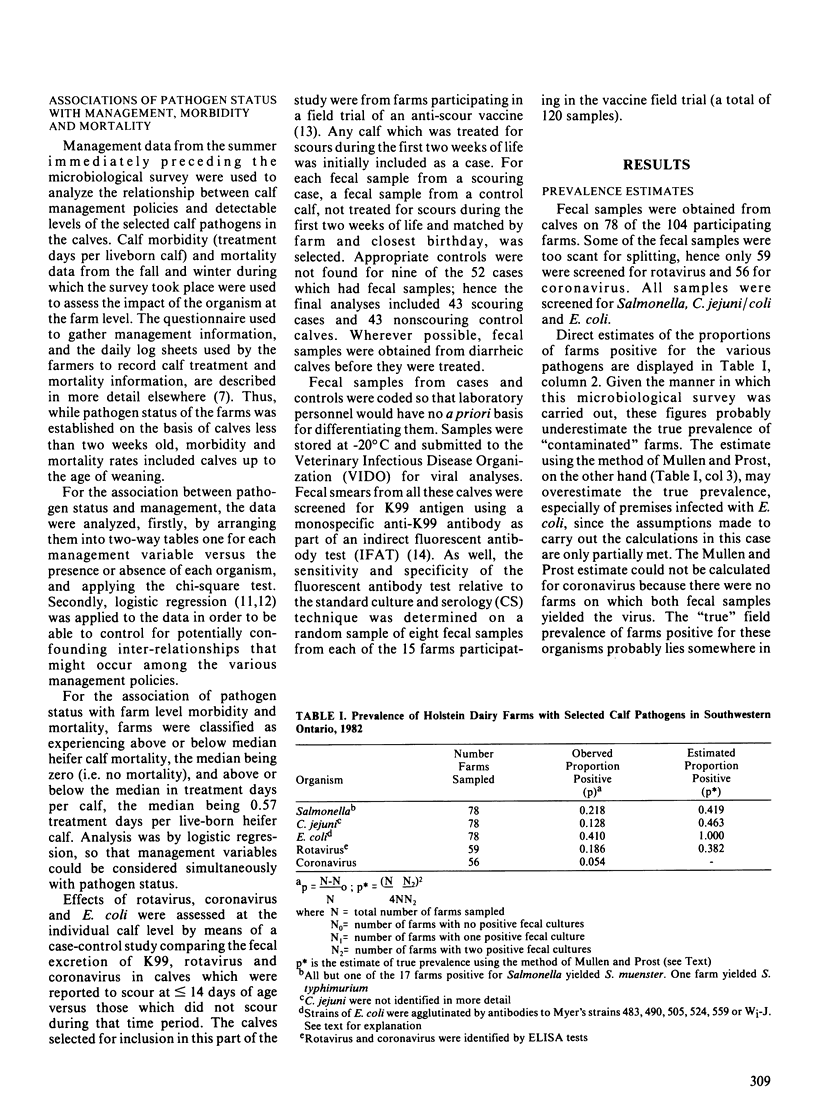
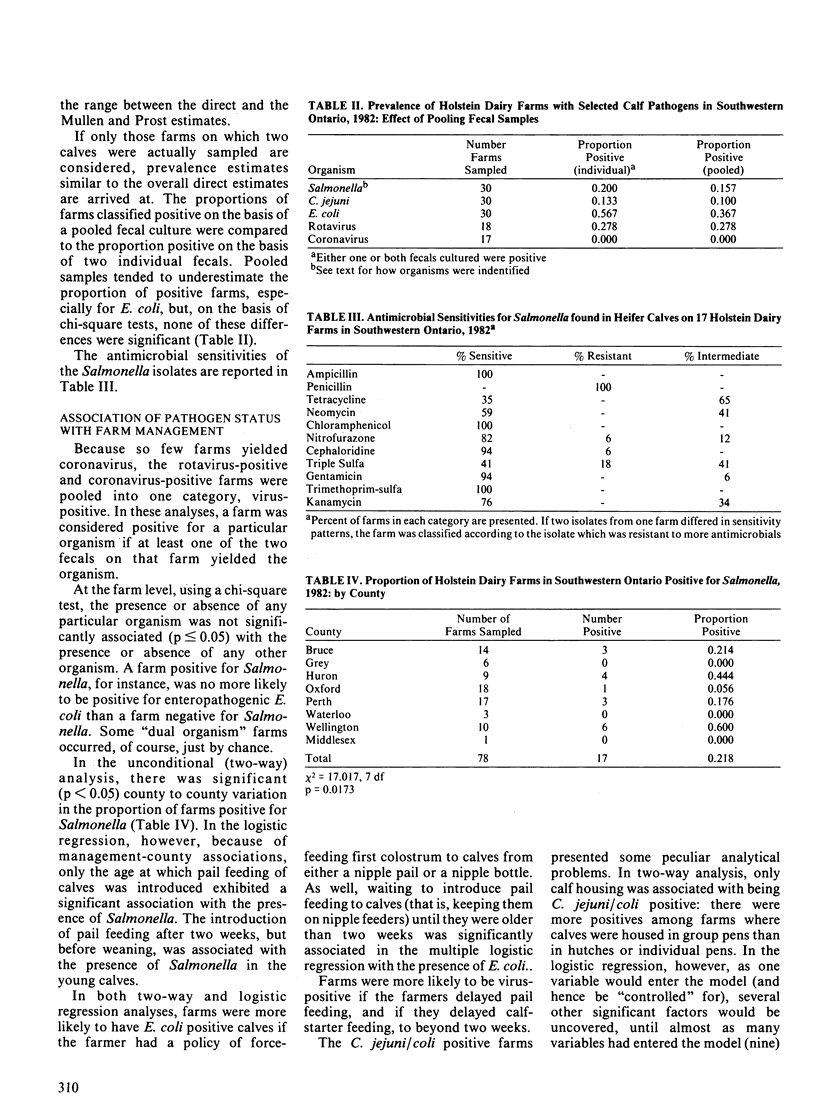
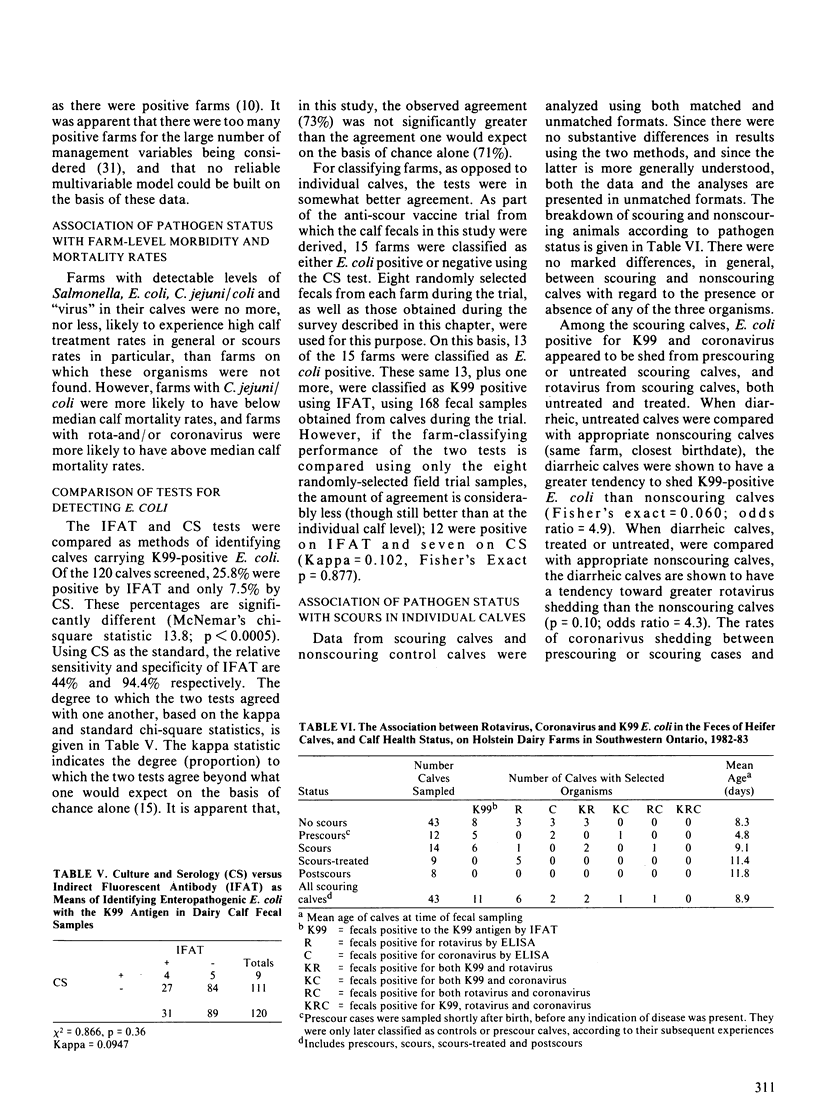
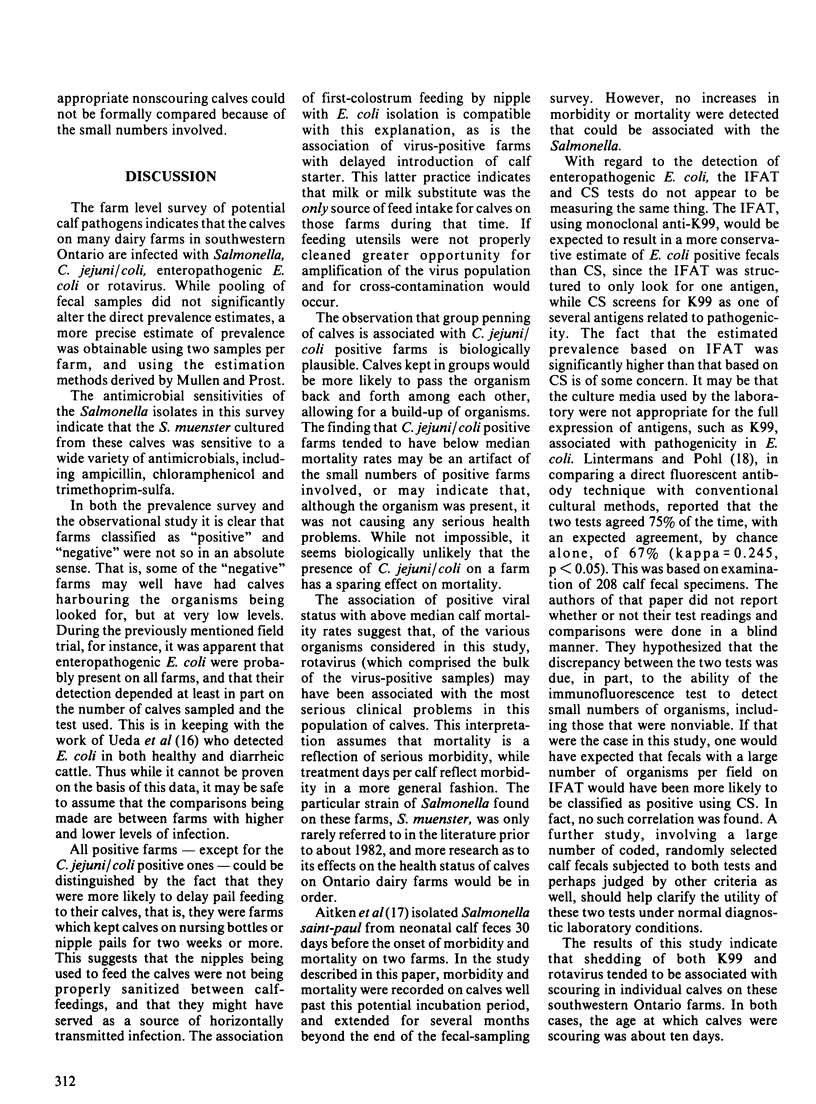
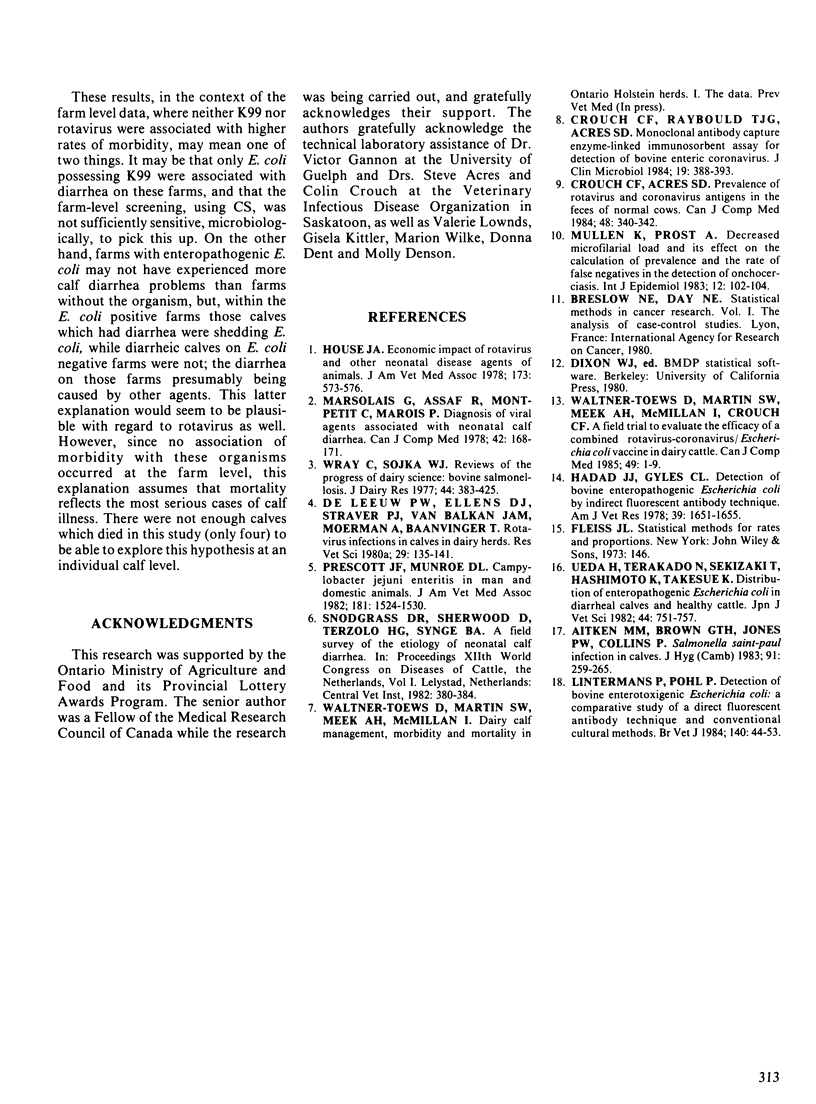
Selected References
These references are in PubMed. This may not be the complete list of references from this article.
- Aitken M. M., Brown G. T., Jones P. W., Collins P. Salmonella saint-paul infection in calves. J Hyg (Lond) 1983 Oct;91(2):259–265. doi: 10.1017/s0022172400060265. [DOI] [PMC free article] [PubMed] [Google Scholar]
- Crouch C. F., Acres S. D. Prevalence of rotavirus and coronavirus antigens in the feces of normal cows. Can J Comp Med. 1984 Jul;48(3):340–342. [PMC free article] [PubMed] [Google Scholar]
- Crouch C. F., Raybould T. J., Acres S. D. Monoclonal antibody capture enzyme-linked immunosorbent assay for detection of bovine enteric coronavirus. J Clin Microbiol. 1984 Mar;19(3):388–393. doi: 10.1128/jcm.19.3.388-393.1984. [DOI] [PMC free article] [PubMed] [Google Scholar]
- Hadad J. J., Gyles C. L. Detection of bovine enteropathogenic Escherichia coli by indirect fluorescent antibody technique. Am J Vet Res. 1978 Oct;39(10):1651–1655. [PubMed] [Google Scholar]
- House J. A. Economic impact of rotavirus and other neonatal disease agents of animals. J Am Vet Med Assoc. 1978 Sep 1;173(5 Pt 2):573–576. [PubMed] [Google Scholar]
- Lintermans P., Pohl P. Detection of bovine enterotoxigenic Escherichia coli: a comparative study of a direct fluorescent antibody technique and conventional culturing methods. Br Vet J. 1984 Jan-Feb;140(1):44–53. doi: 10.1016/0007-1935(84)90057-5. [DOI] [PubMed] [Google Scholar]
- Marsolais G., Assaf R., Montpetit C., Marois P. Diagnosis of viral agents associated with neonatal calf diarrhea. Can J Comp Med. 1978 Apr;42(2):168–171. [PMC free article] [PubMed] [Google Scholar]
- Mullen K., Prost A. Decreased microfilarial load and its effect on the calculation of prevalence and the rate of false negatives in the detection of onchocerciasis. Int J Epidemiol. 1983 Mar;12(1):102–104. doi: 10.1093/ije/12.1.102. [DOI] [PubMed] [Google Scholar]
- Prescott J. F., Munroe D. L. Campylobacter jejuni enteritis in man and domestic animals. J Am Vet Med Assoc. 1982 Dec 15;181(12):1524–1530. [PubMed] [Google Scholar]
- Ueda H., Terakado N., Sekizaki T., Hashimoto K., Takesue K. Distribution of enterotoxigenic Escherichia coli in diarrheal calves and healthy cattle. Nihon Juigaku Zasshi. 1982 Oct;44(5):751–757. doi: 10.1292/jvms1939.44.751. [DOI] [PubMed] [Google Scholar]
- Waltner-Toews D., Martin S. W., Meek A. H., McMillan I., Crouch C. F. A field trial to evaluate the efficacy of a combined rotavirus-coronavirus/Escherichia coli vaccine in dairy cattle. Can J Comp Med. 1985 Jan;49(1):1–9. [PMC free article] [PubMed] [Google Scholar]
- Wray C., Sojka W. J. Reviews of the progress of dairy science: bovine salmonellosis. J Dairy Res. 1977 Jun;44(2):383–425. [PubMed] [Google Scholar]
- de Leeuw P. W., Ellens D. J., Straver P. J., van Balken J. A., Moerman A., Baanvinger T. Rotavirus infections in calves in dairy herds. Res Vet Sci. 1980 Sep;29(2):135–141. doi: 10.1016/S0034-5288(18)32653-5. [DOI] [PMC free article] [PubMed] [Google Scholar]


